This is going to be a big year for Toyota and its sibling Lexus brand. Look for two dozen new and refreshed models to reach showrooms in the coming months. As has become the norm for the two marques, the emphasis will be on “electrified” drivetrains, including at least five EVs. But there’ll also be something to satisfy classic gearheads, as well. More from Headlight.News.
You’ll need a scorecard to keep up with all the news coming out of Toyota’s “Headquarters Confidential” media gathering in Plano, Texas this week. The automaker has invited journalists from around North America – including Headlight.News, of course – to check out all the new products it plans to start rolling into U.S. showrooms this coming year.
All told, there’ll be a full 24 refreshed, updated or special edition models, split evenly between the two brands. As has become the norm for Toyota Motor Corp., the vast majority of the new products will be offered with some form of electrified drivetrain, whether conventional or plug-in hybrid, or in all-electric form.
While the automaker is holding back on a few announcements for later in the week, we got a good look at most of the new models and here’s what we learned is coming from the Toyota brand.
An EV by any name?

The 2026 Toyota bZ adds a small battery-pack option, as well as more power and range for the larger pack.
Until now, the Toyota brand has offered just one EV option, and the bZ4X hasn’t exactly set the world on fire. Critics have lamented its limited range, slow charging speeds, lack of performance – and that awkward name. Toyota is addressing all those concerns – and more.
“You may notice something is missing,” said David Christ, the head of the Toyota division. The electric crossover has been renamed, mercifully, as the bZ. But there’s more.
There are modest design tweaks, both inside and out, but this mid-cycle refresh puts the emphasis on technology, starting with a larger, 14-inch digital display and new twin wireless smartphone chargers.
What potential buyers should really appreciate are the powertrain updates. The 2026 Toyota bZ now features two battery pack choices, a 288-mile max 57.7 kWh option, and a 74.7 kWh alternative delivering an EPA-estimated 314 miles. Toyota claims you’ll be able to go from a 10 to 80% state-of-charge in as little as 30 minutes with a fast-enough public DC quick charger. As for the drivetrain itself, bZ gets a more than 50% increase in power, the all-wheel-drive option making 338 horsepower which, said Toyota, will get you from 0-60 in just under 5 seconds.
bZ Woodland
Like so many of its competitors, Toyota has gotten big into off-roading. While you likely won’t take the 2026 bZ Woodland out to Moab, it should be able to handle a bit of overlanding, what with its higher, 8.3-inch ground clearance and other useful tweaks.
More station wagon-like in appearance, Woodland offers a more roomy interior, with extra cargo space, and a 3,500-pound towing capacity. Finished with standard SofTex seating, it has a number of high-line features, including a pro-grade audio system and a Multi-Terrain Monitor.
The Woodland package comes standard with a 375-hp AWD twin-motor drivetrain and the standard bZ’s larger, 74.7 kWh lithium-ion battery pack – though range is a lower 260 miles, according to preliminary estimates. The new bZ variant adopts the North American Charging System port, making it possible to now plug into the Tesla Supercharger network. With a fast enough DC public charger it will get from a 10 to 80% state-of-charge, said Toyota, “in around 30 minutes.”
More Toyota News
- First Drive: 2025 Toyota 4Runner
- Toyota to Launch 15 New EVs
- Toyota’s Brand Boss Talks the Future of Hybrids, Plug-ins and BEVs
C-HR returns
The third new Toyota-branded EV sees the automaker revive a nameplate we haven’t seen in more than a half-decade. The compact coupe-crossover is the American version of what will be known as the C-HR+ in Europe. Think of it as “a car with attitude,” suggested Christ. It will also be a lot more roomy than the original gas C-HR, thanks to moving its drivetrain under the load floor, with 25.4 cf of cargo space behind the rear seats.
C-HR shares the same eTNGA “architecture” as the rest of the Toyota – and Lexus – EV line-ups – but it’s been tuned, the automaker claims, for more “spirited” driving.
Like the bZ Woodland, the 2026 C-HR will come with standard all-wheel-drive, two motors delivering a combined 338 hp, enough to hit 60 in about 5 seconds. Its 74.7 kWh battery pack gets an estimated 290 miles of range and, like bZ and bZ Woodland, charging times are estimated at as little as 30 minutes.
Look for the 2026 Toyota C-HR to reach U.S. showrooms sometime in 2026.
Other product news
Toyota has plenty more in the pipeline this coming year, including
- The 2026 Toyota Camry Night Shade Edition, with aMidnight Black Metallic exterior design elements, unique 19-inch wheels and gloss black badging;
- The 2026 Toyota Corolla Hatchback FX Special Edition. Influenced by a sporty Corolla hatch offered back in 1987, it gets a unique spoiler and larger wheels;
- The 2026 Corolla Cross, a mid-cycle update for both the gas and hybrid models, getting new paint colors, new wheel options, updated grilles and larger digital displays.
Electrifying
The Corolla Cross is part of a growing line-up of electrified products, said Christ. With the imminent demise of the Supra, that will leave just one product in the automaker’s entire U.S. line-up, the GR86, without at least a hybrid or all-electric option.
As recently as 2023, conventional and plug-in hybrids, fuel-cell vehicles and EVs accounted for barely 30% of Toyota sales in the U.S. That surged to 45% last year and, Christ told Autoblog, “This year we expect it will go to more than 50%.” One big reason: a tripling of EV options through the Toyota brand alone.


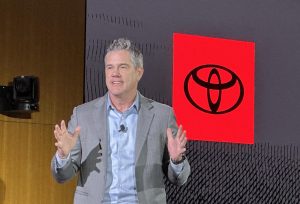



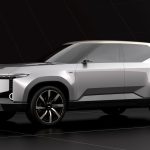
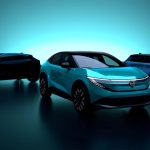
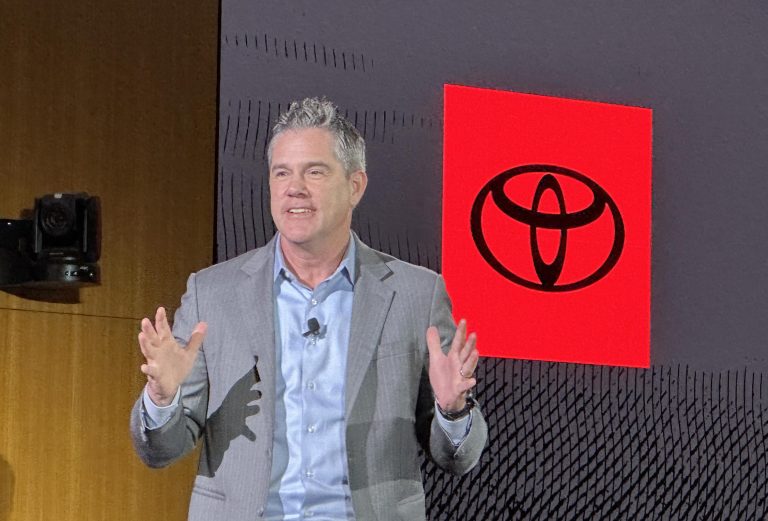
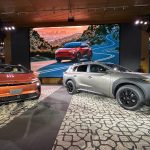
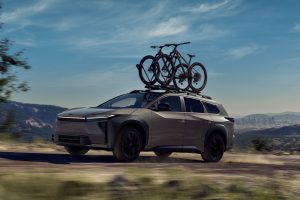
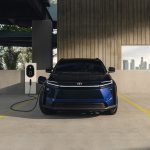

0 Comments